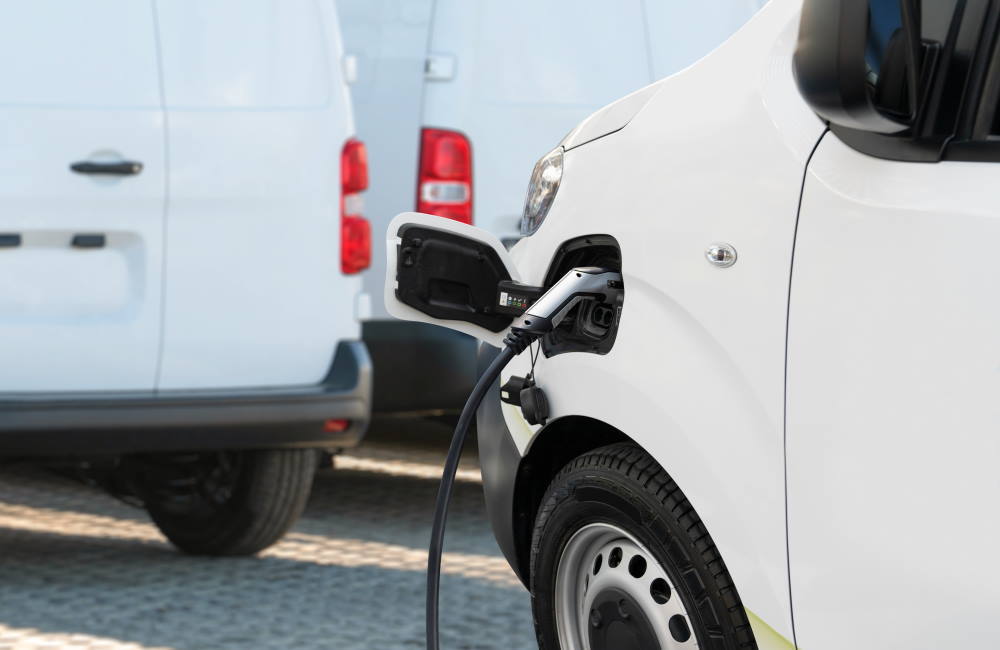The emergence of electric vehicles (EV) represents a way for fleets to reduce the impact of operations on the environment. But it also presents new challenges, with technology inside the cabin that may serve as a distraction for drivers, potentially leading to costly crashes and collisions.
With distracted driving ranking as one of the biggest challenges fleet managers face, many have turned to EV fleet safety training that helps drivers better handle the technologies available in EV. Tony Vinciguerra, Chief Operating Officer at Driving Dynamics, addressed this issue when he joined a panel discussion on EV safety during the NAFA 2022 Institute and Expo in Ohio.
He said fleets can better manage risk by investing in EV driver safety while making the transition to EVs. Doing so addresses both fleet safety and fleet risk management.
EV Fleet Vehicles Present New Challenges
Government and industry regulations call for all EV vehicles to pass the same safety standards as vehicles powered by internal-combustion engines. That also means that the current main cause of crashes - human errors causes 94 percent of them - will remain the main challenge for fleets using EV vehicles.
Interviewed by Automotive Fleet, Vinciguerra said EV vehicles also come with changes that could impact crash numbers. For example, drivers switching from an ICE-powered vehicle to an EV must know how to handle the quicker acceleration in an EV as well as more responsive regenerative braking.
Vinciguerra added that EV fleet safety training ensures that drivers “understand the nuances of an EV, and that you can turn off certain features, like cruise control or regenerative braking, so that you have more control over the vehicle when you’re traveling in ice or snow.”
As an example of one big difference, he said that in an ICE-powered vehicle, “If you take your foot off the gas, you coast, but with an EV, if you take your foot off the pedal, you can feel it; it’s almost as if you have your emergency brake on. It’s that aggressive.”
Working Together With Technology
In an ideal situation, EV fleet safety training for drivers allows them to work in tandem with the complex technology that comes with an EV. Rather than have drivers “figure it out” on their own, fleets can enhance safety and improve risk management by investing in training designed specifically for driving an EV.
For example, EV fleet safety training teaches drivers how the driving dynamics of EVs differ from gas-powered vehicles, especially those functions that can directly impact behind the wheel performance.
Because most drivers will not have experienced driving an EV, training can teach them both the potential and limitations of EV-related technology. Insufficient training can lead to drivers becoming frustrated with EV functions.
The Importance of EV Training
Every commercial operation looking into buying new fleet vehicles now considers making the switch from gas-powered to electric-powered vehicles. In some cases, this change is happening faster than originally anticipated. While all driver training is important, the rapid expansion into EVs makes it an area of specific concern for fleets in the coming years. This is especially true as driver performance represents one of the biggest areas of risk for a fleet.
The best EV fleet safety training engages drivers in the process, letting them know the fleet’s goals for safety as the switch is made to electric-powered vehicles. Driver engagement is critical to success when implementing training. Fleets should consider rewarding the safest drivers in some way that calls attention to the focus on vehicle safety.
With electric vehicles, drivers face a whole new layer of technology on top of the tech tools already available in most modern vehicles, including automatic driver-assistance systems (ADAS). Drivers need training in how to use all these systems so they do not become a fatal distraction.
Vinciguerra said that the shift to automated systems and more “toys inside the vehicle” is increasing the risk of crashes for fleets. He added, “Unless fleet managers start educating their drivers and making them more comfortable behind the wheel, we will continue to see increased fatalities and injuries on the road.”






